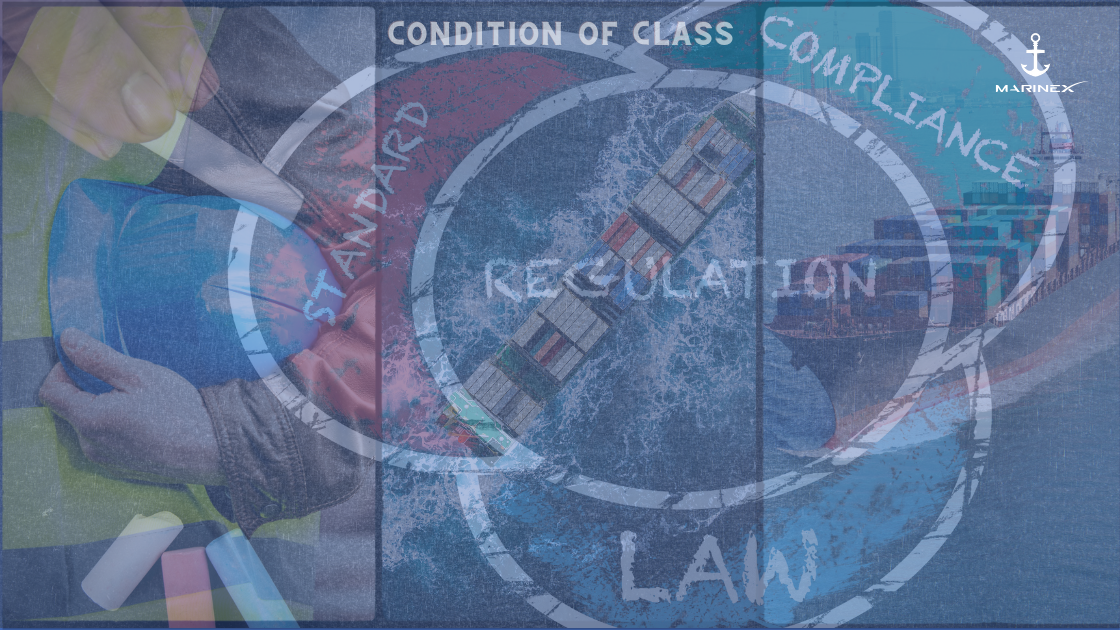Understanding Condition of Class in Maritime Industry

In today's complex maritime industry, where safety, legality, and operational efficiency are paramount, the role of classification societies and the importance of maintaining certificates of class cannot be overstated.
From ensuring vessels are constructed and maintained to rigorous standards to addressing potential issues throughout their operational lifespan, these certifications play a crucial role in safeguarding the integrity of maritime operations.
For maritime professionals, from seafarers to shipowners and beyond, understanding the intricacies of classification societies and the maintenance of certificates of class is not just beneficial but essential. It not only ensures compliance with regulations but also underscores a commitment to professionalism, safety, and environmental stewardship.
In this blog, we delve into the significance of these certifications, exploring their impact on safety, legal compliance, operational continuity, and personal welfare, while also examining notable case studies that underscore their critical importance in the maritime domain. Join us as we navigate through the intricate waters of classification societies and certificates of class, uncovering the vital role they play in ensuring the safety, legality, and sustainability of maritime operations worldwide.
This entails meticulous oversight during the construction phase to ensure adherence to the classification society's regulations. Specifically, the classification society verifies that the ship's design conforms to its standards, that the construction process aligns with the approved design, and that the ship's machinery, both mechanical and electrical, meets the stipulated criteria.
Throughout its operational lifespan, a ship may encounter various issues related to its hull or machinery. For instance, a collision with another vessel could result in damage such as dents or punctures on the ship's exterior. Similarly, an incident like striking a jetty during berthing could cause similar damage.
In scenarios where the ship's machinery malfunctions, such as a non-functional engine governor with delayed spare parts availability, operational challenges arise.
In these circumstances, it becomes evident that the ship is momentarily deviating from the regulations set by the classification society. However, outright revocation of the "Certificate of class" could render the ship unable to navigate, leading to potential logistical and economic repercussions.
Instead, a class surveyor is dispatched to assess the situation and recommend temporary solutions or verify existing interim arrangements. Once these temporary measures are implemented and verified, the ship is granted permission to embark on a single voyage or operate for a specified duration.
Upon rectification of the identified issue, a class surveyor conducts a thorough verification process. Upon successful verification, the "Condition of class" is lifted, restoring the certificate's unconditional validity.
In instances where structural repairs are necessary, particularly to the hull, the classification society may require ongoing monitoring by a class surveyor throughout the repair process.
Failure to address the specified condition within the stipulated timeframe results in the invalidation of the certificate of class, rendering the ship legally unfit for seaworthy operations.
Thus, timely rectification and adherence to classification society standards are paramount for ensuring the vessel's continued compliance and seaworthiness.
A Short Quiz
Open in browser, quiz would not work on email newsletter
To access the full blog, subscribe to MarineX Premium Plans and elevate your maritime knowledge to the next level. Gain the MarineX Edge for comprehensive insights into all things maritime.
Limited time Super offer on MarineX Plus Membership (50% Forever discount)